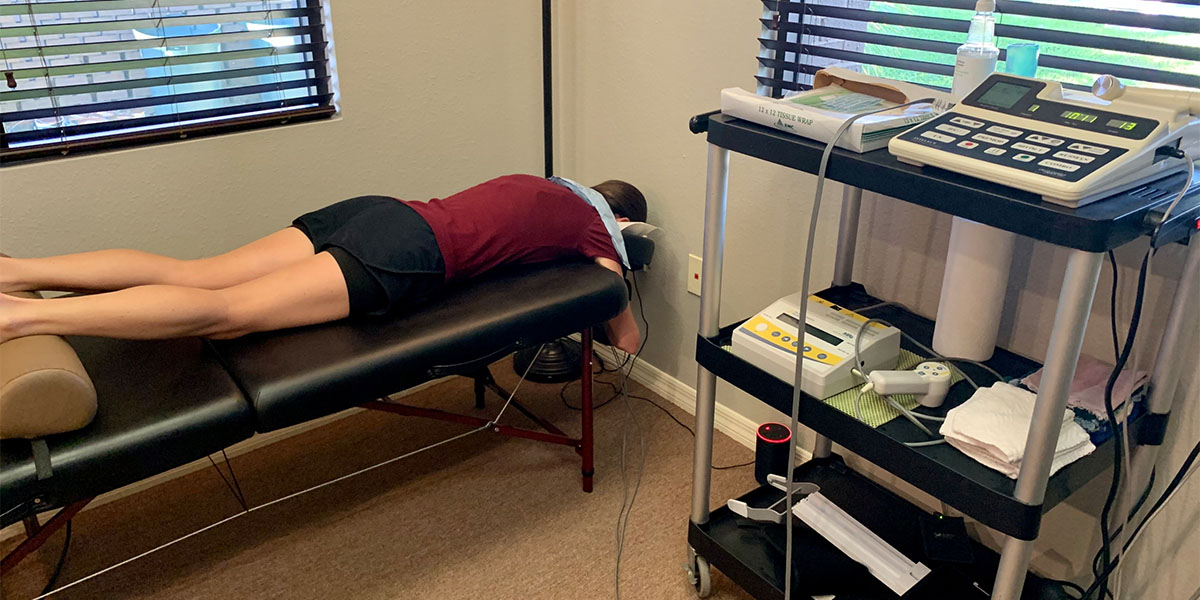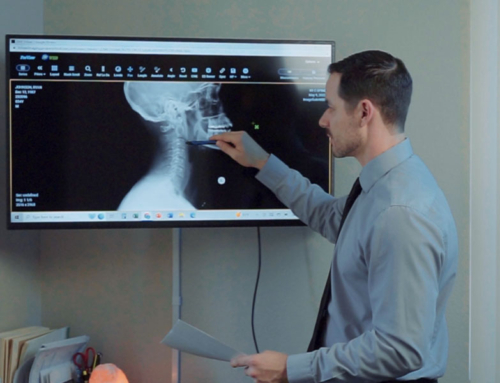A human’s neck normally has a natural C-shaped curve, with the opening of the C facing the back. Injuries to the neck and spine can cause this curve to be compromised, and the loss of the curve – and accompanying neck pain – are considered warning signs that you should seek corrective action. If the curvature of your neck is misaligned and left untreated, you may risk permanent Injury to the neck and increased pain and dysfunction. Many people in this situation depend on NSAIDs, muscle relaxants, or even opioids to get relief.
The loss of the natural neck curve weakens the neck and makes it less capable of withstanding the rigors of daily life. Several injuries are associated with the curvature malfunction, as noted below.
Neck Disc Injuries: The spine consists of a series of boney building blocks stacked on top of one another. Positioned between the bones is a soft, spongy spacer known as a Disc. Discs are the body’s essential shock absorbers but are also vulnerable to injuries such as Disc Protrusion and Disc Herniations. This class of disc injuries can result in chronic pain and a significant loss of the natural curve in the neck.
Neck Ligament Injuries: Bones are connected by thick pieces of connective tissue known as ligaments. These ligaments are vital as they provide critical stability for the neck. Multiple neck ligaments provide support and allow the head to remain firmly attached to the neck. Unfortunately, ligaments can be damaged – resulting in pain, restricted range of motion, instability, and loss of the natural curve in the neck. Trauma, such as car accidents, is the leading cause of neck ligament injuries.
Nerve Injuries: There are spinal nerves connected to the spine at each level of the neck. These numbered nerves travel to various muscles and other structures. For instance, the C6 nerve exits the mid to lower neck, allowing the forearm, thumb, and index finger muscles to receive the strength and sensation they need. This transmission of information is necessary for normal muscle function and an individual’s capability to maintain a natural curve in the neck. If the nerve is inflamed, irritated, or compressed, dysfunction – including the loss of the natural curve – will occur.
Neck Muscle/Tendon Injuries: Muscles are necessary to stabilize and support the head and neck. Given that the average adult’s head weighs approximately 10 pounds, the muscles have quite a strenuous job to do. Muscles may become tired or injured in the process of providing support. Additionally, tendons – which are thick bands of connective tissue that connect muscle to bone – can experience inflammation or begin to degenerate. If tendons become torn, it can cause intense pain and impairment to the range of motion. Muscle and tendon injuries can result in the loss of the natural curve in your neck, causing pain and dysfunction.
Neck Facet Injuries: A Facet is a small joint on the back of the spine. This cartilage-lined joint is actually a pair, with one joint on the right side of the spine and one on the left. The Facet joint both determines and limits the motion of the spine. They are vulnerable to injury due to degeneration, surgery, trauma, and instability. Facet injuries can result in neck pain, restricted movement, and loss of the natural curve in the neck.
If you are experiencing neck pain and have not identified the source, it is time to call your chiropractor.
Dr. Ryan Johnson provides innovative and exceptional chiropractic care to Sarasota area residents and visitors. There is no need to live in pain – call today.


